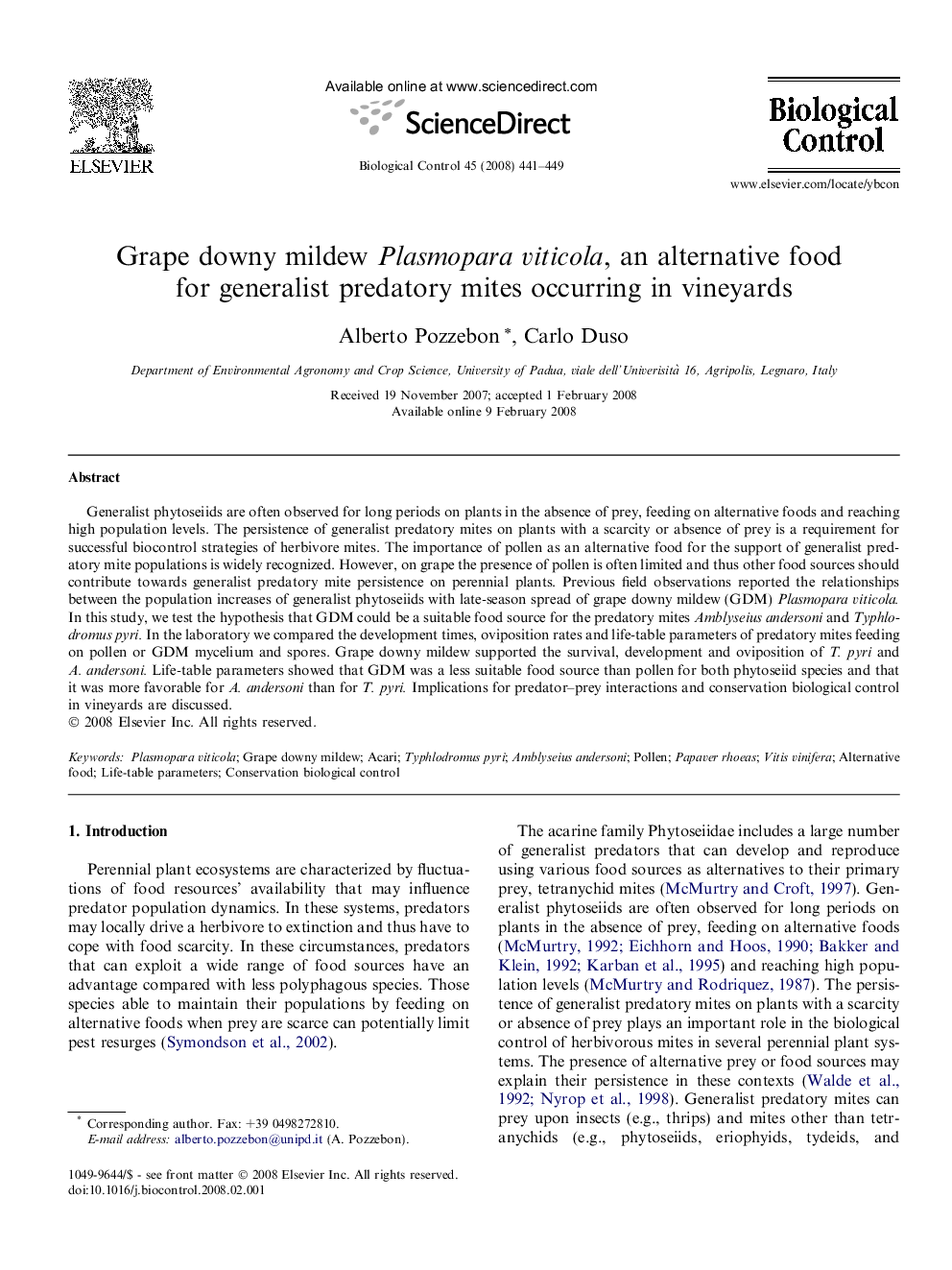| کد مقاله | کد نشریه | سال انتشار | مقاله انگلیسی | نسخه تمام متن |
|---|---|---|---|---|
| 4504977 | 1321119 | 2008 | 9 صفحه PDF | دانلود رایگان |

Generalist phytoseiids are often observed for long periods on plants in the absence of prey, feeding on alternative foods and reaching high population levels. The persistence of generalist predatory mites on plants with a scarcity or absence of prey is a requirement for successful biocontrol strategies of herbivore mites. The importance of pollen as an alternative food for the support of generalist predatory mite populations is widely recognized. However, on grape the presence of pollen is often limited and thus other food sources should contribute towards generalist predatory mite persistence on perennial plants. Previous field observations reported the relationships between the population increases of generalist phytoseiids with late-season spread of grape downy mildew (GDM) Plasmopara viticola. In this study, we test the hypothesis that GDM could be a suitable food source for the predatory mites Amblyseius andersoni and Typhlodromus pyri. In the laboratory we compared the development times, oviposition rates and life-table parameters of predatory mites feeding on pollen or GDM mycelium and spores. Grape downy mildew supported the survival, development and oviposition of T. pyri and A. andersoni. Life-table parameters showed that GDM was a less suitable food source than pollen for both phytoseiid species and that it was more favorable for A. andersoni than for T. pyri. Implications for predator–prey interactions and conservation biological control in vineyards are discussed.
Journal: Biological Control - Volume 45, Issue 3, June 2008, Pages 441–449